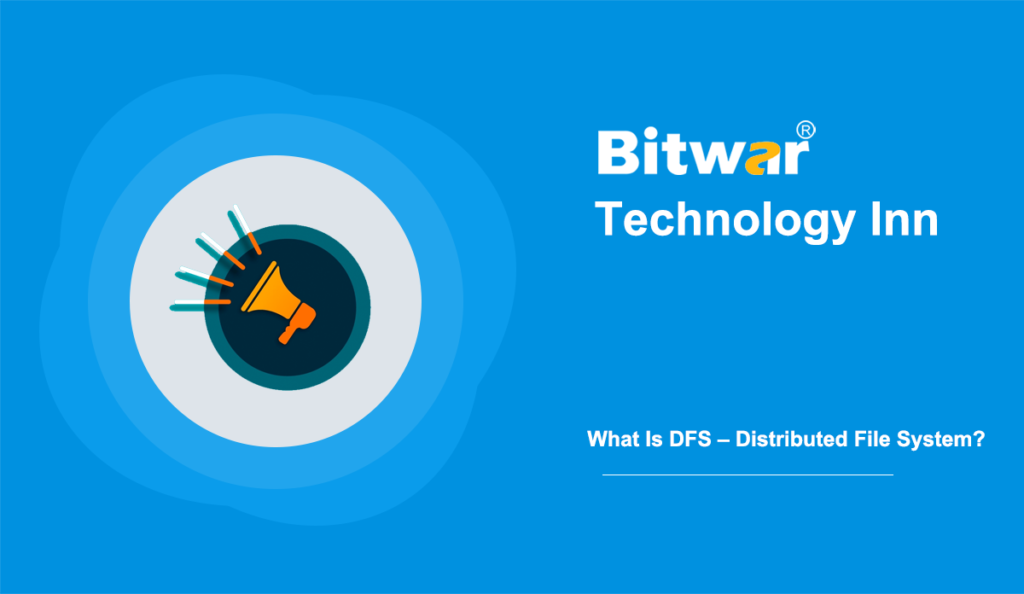Table of Contents
Overview
Distributed File System, abbreviated as DFS, is a set of client and server services, which allow organizations to use Microsoft Windows servers to organize many distributed SMB file shares into distributed file systems.
DFS enables the logical grouping of shares on multiple servers and transparently links shares to a single hierarchical namespace. DFS organizes shared resources on the network in a tree-like structure.
There are two components of DFS service: Location transparency (through namespace components) and Redundancy (through file replication components).
In the event of heavy load or failure, these components together increase data availability by allowing logical grouping of shares in multiple different locations under one folder, the DFS root.
There is no need to use the two components of DFS together. It is entirely possible to use the Location transparency component without using the Redundancy component. Similarly, it is entirely possible to use file replication between servers without merging them into one namespace.
Implement DFS
There are two ways to implement DFS on the server:
Standalone DFS Namespace
Standalone DFS allows DFS roots that exist only on the local computer, so Active Directory is not used.
It can only be accessed on computers that create standalone DFS.
It does not provide any fault tolerance and cannot be connected to any other DFS.
Due to the limited utility, Standalone DFS roots are rarely encountered. It is the only option available on the Windows NT 4.0 server systems.
Domain-Based DFS Namespace
Domain-Based DFS stores the DFS configuration in the Active Directory so that the DFS namespace root is available at \\<domainname>\<dfsroot> or \\<FQDN>\<dfsroot>.
Namespace roots can reside on domain member servers or domain controllers. If the domain controller is not used as a namespace root server, you should use multiple member servers to provide full fault tolerance.
Features
- User mobility: It automatically takes the user’s home directory to the node where the user logs on.
- Performance: Performance is based on the average time it takes to convince the client’s requests. This time covers CPU time, the time spent accessing secondary storage, and the network access time.
- Simple to use: The file system’s user interface is simple, and the number of commands in the file is small.
- High availability: The Distributed File System can continue to function in the event of any partial failure, such a link failure, as a node failure, or storage drive crash.
Applications
NFS: NFS is the abbreviation for a Network File System. It is a client-server architecture allowing computer users to store, view, and update files remotely. The NFS protocol is one of distributed file system standards for NAS (Network-Attached Storage).
CIFS: Standing for Common Internet File System, CIFS is the accent of SMB. It means that CIFS is an application of the SIMB protocol designed by Microsoft.
SMB: SMB represents Server Message Block. Invented by IMB, it is a protocol to share files. The SMB protocol is designed to allow computers to read and write files over a LAN (Local Area Network). Directories in remote hosts can be accessed through SMB, called shares.
NetWare: NetWare was developed by Nowell and is an abandoned computer network operating system. It primarily uses combined multitasking to operate different services on personal computers using IPX network protocols.
Advantages and Disadvantages
Advantages
- It allows users to share the data remotely.
- DFS enables multiple users to access or store the data.
- It provides transparency of data, even if a server or disk fails.
- It improves file availability, access time, and network efficiency.
- DFS improves the ability to change the size of the data and to exchange the data.
Disadvantages
- Database connections in DFS are complicated.
- If all nodes try to send data at once, overloading is most likely to occur.
- Compared with a single user system, the processing of databases in DFS is not easy.
- Messages and data in the network may be lost when moving from one node to another.
- In DFS, nodes and connections need to be protected. Thus we can say that security is at risk.
Bottom Line
In conclusion, this article gives a brief introduction to Distributed File System (DFS), including its definition, implementation, features, applications, and advantages and disadvantages. We will be appreciated if this post is helpful to you.
